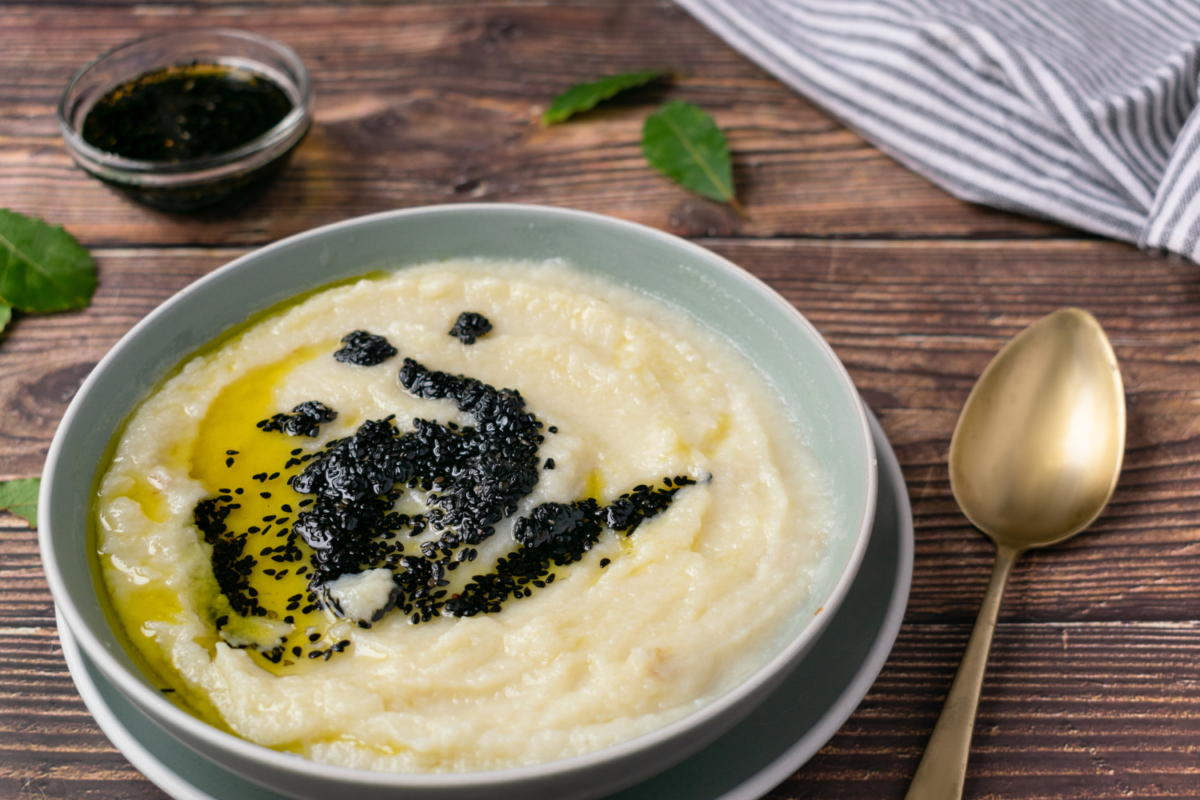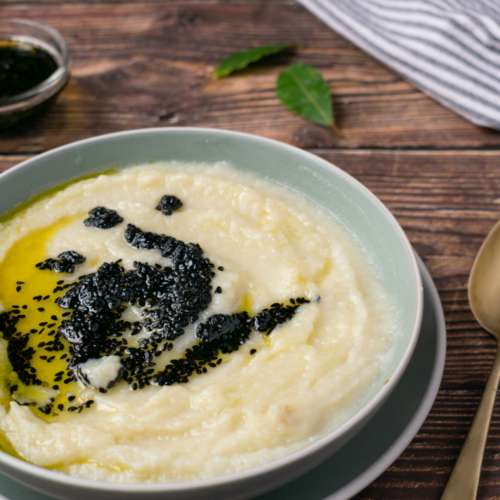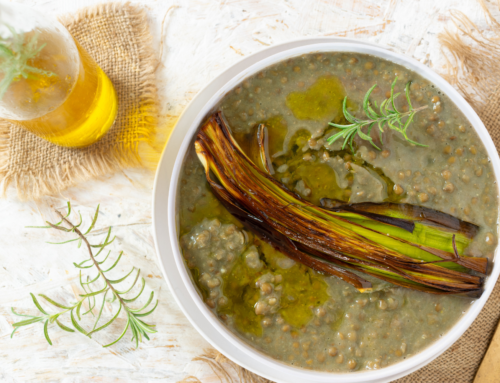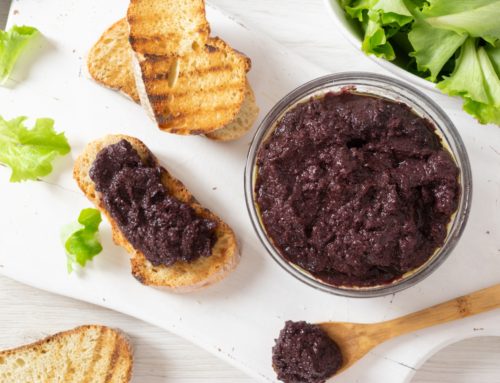Cauliflower has always been the underdog of vegetables. It’s hated especially by children, people very sensitive to smells (yes, it’s very smelly while it’s cooking), and those who have never been so lucky to taste it prepared the proper way.
No one has doubts about its nutritional properties, including the rich vitamins and nutrients it contains. But still, it’s one of the vegetables that most people will avoid ordering at a restaurant or buying in a grocery store.

Cauliflower comes from the Brassica oleracea family, as do broccoli, brussels sprouts, kale, and cabbage. It has the same unique and singular shape as broccoli, made of small little flowers (inflorescence) tightly connected to each other. Cauliflower also comes in different colors: white, which is the most common, orange, and purple. This makes for much more interest in cooking for the beautiful color nuance they can give to our dish.
The thing I like most about this vegetable is its versatility. If we take the little florets and cut them very thin, they can be eaten raw and will have this distinguished mustard flavor. Grate cauliflower, using a good parmesan grater, on top of your grilled fish, and instantly you will have a powerful earthy punch of mustard or wasabi in your mouth.
If you don’t like its flavor raw, gently steam cauliflower and eat it as a side dish, dressed with a vinaigrette. You can also cook it longer to make mashed cauliflower. Ultimately, you can turn it into a tasty soup that is accompanied by garlic bread and crunchy toasted seeds.
Check out this video of Bill Bradley, RD making this delicious heartwarming soup.
Another way to eat cauliflower is roasted in the oven or on a barbecue. All the sweetness from this vegetable will come out and the wonderful Maillard reaction will color the white surface of the vegetables with nice brown roasted spots.
Anyway, today I propose the best cauliflower soup recipe ever. Yes, really. This is a creamy cauliflower soup without any cream or additional seasonings. It’s all about trying to develop all the flavor directly from the vegetable itself to make a flavorful yet healthy cauliflower soup.
I use homemade sesame-infused oil and fried shallots to finish up this simple cauliflower soup. But you can be spontaneous and add other types of seeds or ingredients as a garnish as well. If you have any truffles, by chance? Please try this deliciously easy cauliflower soup, you won’t regret it.
Notes
- For extra flavor, saute the shallots with two minced garlic cloves.
- Feel free to substitute the shallots for red onion, white onion, or yellow onion.
- If you don’t want to use cauliflower, you can easily substitute it for broccoli florets.
- Want to add more vegetables? Some good options include carrots, celery, parsnip, fennel, zucchini sweet potato, and leek.
- If you want a creamier cauliflower soup, add half a cup of heavy cream or half-and-half when you add the cauliflower to the Dutch oven.
- This is a hearty soup, but if you want to make it a little bit more filling, add a can of white beans. They’ll blend up perfectly with the vegetables in the blender.
- Feel free to use an immersion blender instead as well.
FAQs
How can I thicken my cauliflower soup?
If you find you add the vegetable broth too quickly and your soup is too thin, this is easy to fix with a cornstarch slurry. Combine one part cornstarch with two parts water and then mix that into your soup. Continue with this process until it reaches your desired consistency.
Why is my cauliflower soup bland?
If your cauliflower soup is bland, it doesn’t have enough seasoning. Fortunately, this creamy cauliflower soup recipe is seasoned with sesame olive oil, bay leaves, salt, and pepper.
Is creamy cauliflower soup vegan?
Substitute the butter for vegan butter or just use olive oil and this becomes a creamy vegan cauliflower soup recipe. It’s also naturally gluten-free and that butter swap will make it dairy-free.
How do you make roasted cauliflower soup?
Preheat your 425-degree oven and toss the cauliflower onto a parchment paper-lined rimmed baking sheet with olive oil. Roast, turning halfway, for about 25 to 35 minutes until tender and brown around the edges. Then you can add them to the pot and continue with the instructions, simmering until the remaining ingredients are tender.
Can I use frozen cauliflower?
Yes, you can use frozen cauliflower florets instead of fresh cauliflower. They’ll just probably need about five more minutes of cooking time until tender.
What do you serve with cauliflower soup?
Creamy cauliflower soup can be served as both a main dish with a side of bread and a side dish with a salad or grilled sandwich.
As mentioned, you can also add the garnish of your choice. You might prefer to keep it simple with a sprinkle of crushed red pepper flakes, chopped fresh parsley, fresh thyme leaves, green onion, or chives.
Or opt for crumbled bacon bits, fresh lemon zest, roasted chickpeas, finely grated parmesan cheese, or shredded cheddar cheese. Another option is to simply use extra virgin olive oil and not sesame-infused olive oil.
How do you store leftover cauliflower soup?
Store leftover creamy cauliflower soup in an airtight container in the fridge for up to four days. Reheat it in the microwave on 50% power or on low heat on the stovetop until heated through.
Can you freeze creamy cauliflower soup?
Yes, you can freeze cauliflower soup in a freezer-safe container for up to three months. Thaw it overnight in the fridge before reheating it as above.

Creamy Cauliflower Soup with Potatoes and Black Sesame Oil
Ingredients
- 1 tbsp black sesame seeds (you can use white if that’s what you have)
- ¼ cup extra virgin olive oil
- 3 tbsp butter
- 2 small shallots, peeled and diced
- 1 large head cauliflower, cut into large florets
- 1 pound potatoes, peeled and chopped into small cubes.
- 2 bay leaves
- 2 cups vegetable stock, plus more if needed, divided
- Extra virgin olive oil
- Kosher salt
- Freshly ground black pepper
Instructions
- Toast the sesame seeds in a nonstick pan over medium heat until fragrant (about 2 minutes). Transfer the seeds to a small bowl. Cover the seeds with olive oil. Stir once and let them infuse for about 15 minutes. You can prepare this a day ahead; refrigerate the oil until it’s needed.
- Meanwhile, in a large Dutch oven, melt the butter over medium-high heat, then add the shallots and stir them constantly until they soften (about 2 minutes).
- Add the cauliflower, potatoes, and bay leaves. Add enough of the stock to cover them and bring the mixture to a boil. Cover, reduce heat, and cook on a low boil until the cauliflower is completely tender (about 20 minutes). Heat the remaining stock in a small saucepan until it simmers.
- Discard the bay leaves then transfer the vegetables with a slotted spoon to a blender large enough for the soup. Puree the vegetables. Add the stock, a little at a time, until you get a completely smooth consistency. If the soup is too thick, whisk in additional hot vegetable stock, ½ cup at a time, until you've reached the desired consistency. Add the olive oil, a little at a time, to emulsify and make the soup even smoother. Season to taste with salt and pepper. Serve the soup topped with sesame-infused oil.





